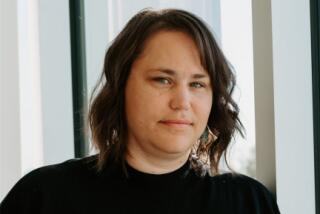Discovery of Indian Remains Raises Questions
DENVER — The bones lay in boxes and on shelves in a dusty storage room through the decades, the remains of 187 unknown American Indians.
Some bones came to the Colorado Historical Society by mail. Some were delivered in boxes. A few were donated when the historical society opened more than 100 years ago. Others were accidental findings by construction workers and archeologists.
After years of failed identification attempts, they were reburied with blessings in donated land along the Front Range.
Under the Native American Graves Protection and Repatriation Act of 1990, federally funded institutions with Native American collections are required to return sacred objects, human remains and objects buried with the dead. But identification can be difficult, if not impossible.
“We consult tribes and study the bones to determine an approximate age,” said Anne Bond, spokeswoman for the Colorado Historical Society. “But the best way to identify bones is through objects discovered nearby.”
But most of the 187 remains weren’t found with anything else. So historical society officials met in May 2000 with members of the 12 tribes who were the most likely descendants.
“Usually repatriation occurs on a case-to-case basis,” Bond said. “But in order to get these souls back into the ground, tribes agreed to say, ‘These could be members of our group.’ ”
The tribes agreed to rebury the remains together in July under the control of the only tribes still in Colorado, the Ute Mountain Ute and Southern Ute, both based in the southwestern corner of the state. The location is secret to prevent grave-robbing.
“Some tribes have created a reburial ceremony,” said Karen Wilde Rogers, spokeswoman for the Colorado Commission on Indian Affairs. “Others use traditional funeral ceremonies. This is a new issue for tribes. They never thought they’d have to face it.”
She would not comment specifically on the ceremonies because they are sacred to tribes.
Though the identification process can be tedious, it’s still better than the years when officials didn’t think to return sacred tribal property, said Howard Richards, repatriation representative for the Southern Ute tribe.
“I have to put aside my personal feelings and deal with the law that will help reach the final interment. At the end of the day, I’m going to get those remains put back to Mother Earth, and it brings closure,” he said.
The process is usually simpler, Bond said. The historical society sent a book that cataloged its collection of bones and sacred objects to the 42 tribes that once occupied parts of Colorado. Most tribes write a letter to the society proving ownership of an object or remain, and it’s returned to them quickly.
Other tribes, like the Zuni Pueblo tribe based in Zuni, N.M., don’t repatriate bones. They believe a body must stay where it was first buried in order for the spirit to remain at peace.
“If we were to bring them back and rebury on tribal land, it could come back on the living,” said Dan Simplicio, tribal councilman.
The tribe is working on reburying remains near El Morro National Monument, near the reservation on the west central edge of New Mexico.
In either case, tribes prefer that the bones simply stay put. But construction and excavation sites often dredge up bones, said Susan Collins, state archeologist. She’s been responding to discoveries monthly since 1990.
“Landowners are now more sensitive to Indian communities. As a result, more findings are reported,” she said.
When remains are found, a coroner is called. If there has been no crime, the remains are sent to a laboratory to be tested and identified by Collins. From there, tribes can begin the process of reclamation.
Throughout the country, more than 24,000 human remains have been given back to tribes, according to John Robbins, assistant director for cultural resources at the National Park Service, which oversees some repatriation.
Even more objects have been returned. But the law is specific with what can and can’t be repatriated. Often tribes are turned down because they could not prove an item fit into the categories.
For example, the historical society has a dress belonging to Chipeta, wife of the famous Chief Ouray. But because the Southern Ute tribe couldn’t prove it was a sacred object, it wasn’t returned.
“We’re willing to work with tribes when objects have sacred or community value,” Bond said, “But we’re not going to just give our collections away.”
More to Read
Sign up for Essential California
The most important California stories and recommendations in your inbox every morning.
You may occasionally receive promotional content from the Los Angeles Times.










